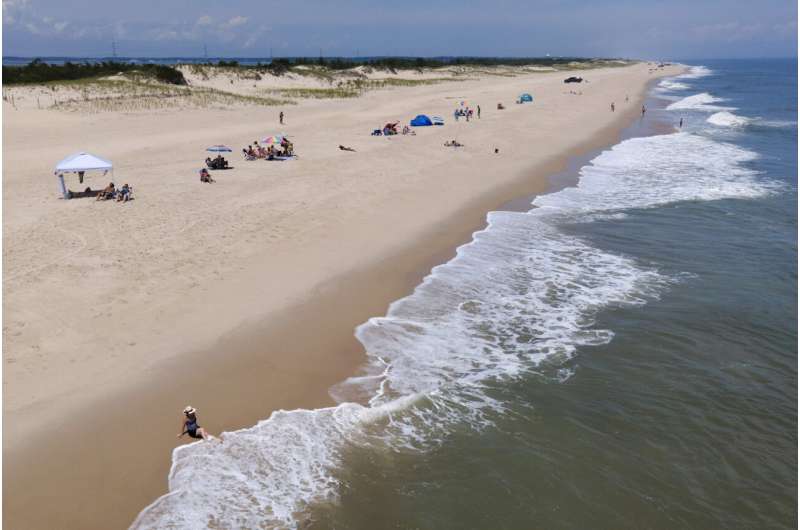
Delaware’s low elevation mixed with crowded beaches and limited exit routes make the state particularly vulnerable to massive flooding, but officials hope an influx of federal infrastructure money will trigger future evacuation plans automatically via artificial intelligence.
The Biden administration was set to announce a total of $53 million in grants Thursday to Delaware and seven other states aimed at high-tech solutions to traffic congestion problems. Although the money comes from the infrastructure law the president signed in 2021, many of the programs—including the $5 million for flood response efforts in Biden’s home state—have evolved since then.
“What’s new is the predictive analysis; the machine learning,” U.S. Federal Highway Administrator Shailen Bhatt, Delaware’s former transportation secretary, said in an interview with The Associated Press. “Because now we have access to all this data, it’s hard for us as humans to figure out what is data and what is actionable information.”
Delaware officials pull off evacuation-type procedures every week during the tourism season, with long lines of cars headed to the beaches on weekend mornings and back at night. But flooding presents a unique problem—including standing water on roads that can make the most direct routes out of town even more treacherous than simply sheltering in place.
“What you don’t want to do is make the decision too late and then you have vehicles caught out,” said Gene Donaldson, operations manager at the state’s 24-hour Transportation Management Center.
Delaware’s transportation department, which controls more than 90% of roads in a state with the lowest average elevation in the country, is tasked with implementing evacuation plans during high water—a bureaucratic nightmare considering how quickly conditions can change.
“For humans to monitor thousands of detectors or data sources is overwhelming,” said George Zhao, director of transportation for Arlington, Virginia-based BlueHalo, which has worked with Delaware on developing the software.
That’s where AI comes in. Rather than sending a crew to the scene to block an impassable road, the system uses sensors to detect weather threats—and even can predict them. Then, it sends the information directly to drivers through cellphone alerts while broadcasting them simultaneously on electronic highway signs.
The amount of data keeps growing, with many automated cars now able to not only inform their drivers of the dangers ahead but also feed the system to warn others.
Researchers at Missouri University of Science and Technology tested an earlier version of a flood prediction analysis system on the Mississippi River between 2019-22. Steve Corns, an associate professor of engineering management and systems engineering who co-authored the study, said the system was able to detect in minutes what used to take hours.
But now, Corns said, the capabilities are even more advanced and useful—provided they’re adequately funded so the technology doesn’t become obsolete.
Previous legislation had awarded more than $300 million in congestion relief grants, and Bhatt said the agency received $385 million in applications for the $52.8 million in the latest batch under the infrastructure law. He said that “shows huge appetite” for innovative solutions to tackle traffic problems.
Other payouts in this round of grants include $14 million for machine learning traffic prediction and signal timing in Maryland and $12.7 million to retrofit Ann Arbor, Michigan’s traffic system with cellular technology that could become a national template. It also includes $11.6 million to expand a microtransit service in Grand Rapids, Minnesota.
© 2023 The Associated Press. All rights reserved. This material may not be published, broadcast, rewritten or redistributed without permission.
Citation:
Delaware taps artificial intelligence to evacuate crowded beaches when floods hit (2023, May 25)
retrieved 25 May 2023
from https://techxplore.com/news/2023-05-delaware-artificial-intelligence-evacuate-crowded.html
This document is subject to copyright. Apart from any fair dealing for the purpose of private study or research, no
part may be reproduced without the written permission. The content is provided for information purposes only.
Stay connected with us on social media platform for instant update click here to join our Twitter, & Facebook
We are now on Telegram. Click here to join our channel (@TechiUpdate) and stay updated with the latest Technology headlines.
For all the latest Technology News Click Here
For the latest news and updates, follow us on Google News.
